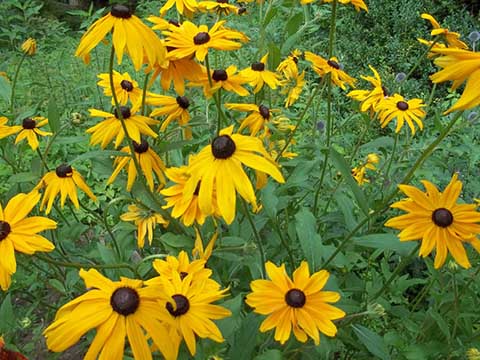Main nutritional element: Phosphor
Plants need a certain amount of phosphorus for the formation of flowers and fruits. In addition, this element is responsible for the formation of crumbs in the soil. Lacking, then the plants have slower growth and produce fewer and smaller flowers and fruits. At a cursory glance, the symptoms appear, to be equal to those of nitrogen deficiency. You can tell a difference there, that the leaves do not turn yellow. They can even look quite dark or have a reddish tinge on the underside. Otherwise, their posture appears to be quite rigid. Here, too, the deficiency symptoms first appear on the older leaves.
In the garden, we hardly have to fear any direct effects on the plants if there is an excess of phosphorus. At the same time there is little nitrogen in the soil, then the excess parts of the element react with the trace elements iron and zinc. Phosphate compounds are formed, which to iron- and zinc deficiency and ultimately lead to stunted growth again. Without a proper soil analysis, however, in this case you can first feel in the dark.
Unfortunately, phosphorus has another unpleasant property. From our households (z.B. laundry detergent) it gets into the rivers and lakes. There it ensures oversized algae growth. When these die off after their life cycle, they are broken down by the bacteria. Lots of seaweed mean, that the bacteria multiply disproportionately. The overpopulation uses proportionally too much of the oxygen, that is in the water. This means that the supply is no longer sufficient for the fish available, Plants and other living things. As a result, they gradually die from lack of oxygen. This process is known as "the body of water overturns".
One way of adding phosphorus to the soil without using chemicals is to use bone meal. It is an organic fertilizer, made from bone waste from slaughterhouses.
